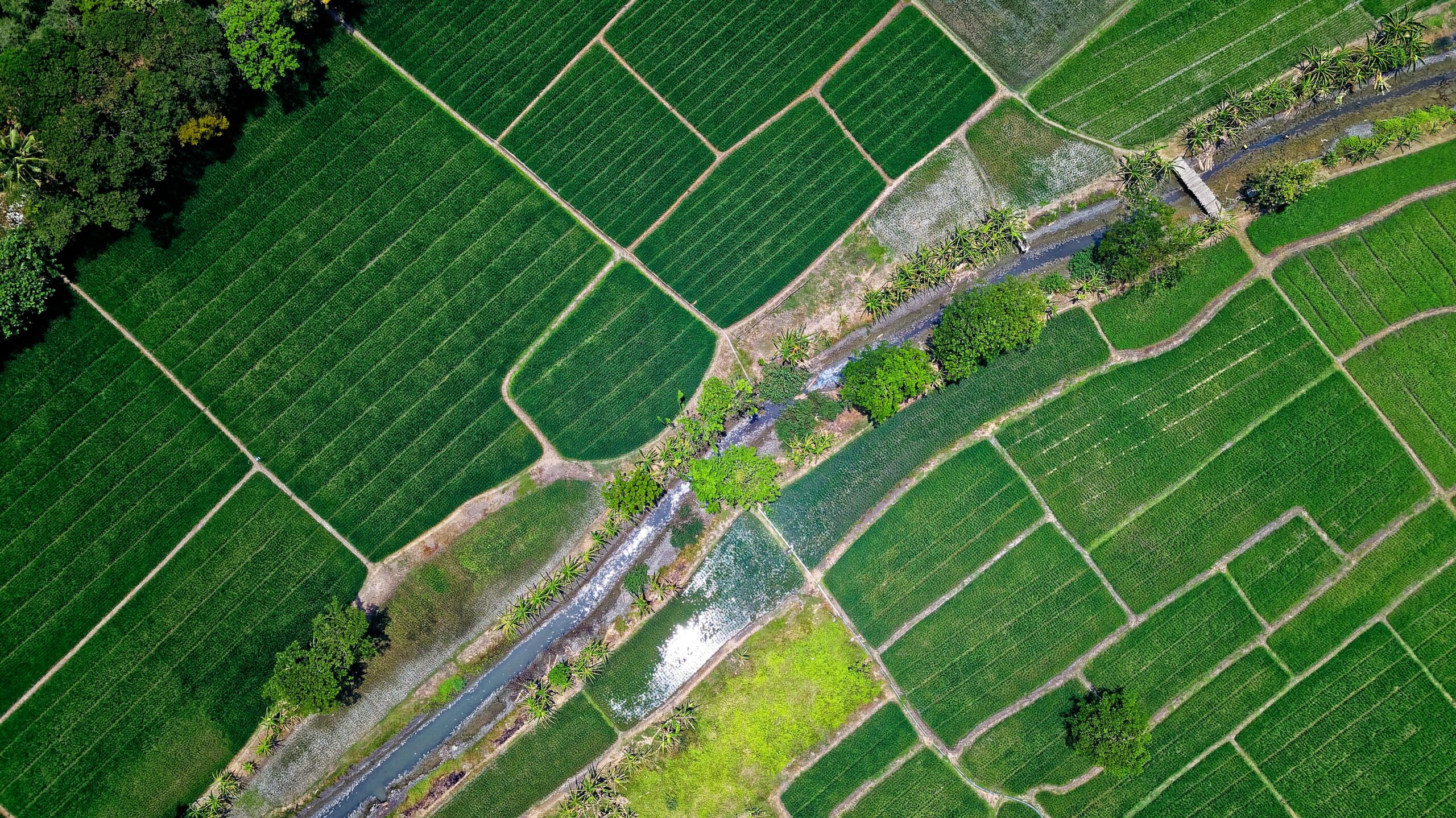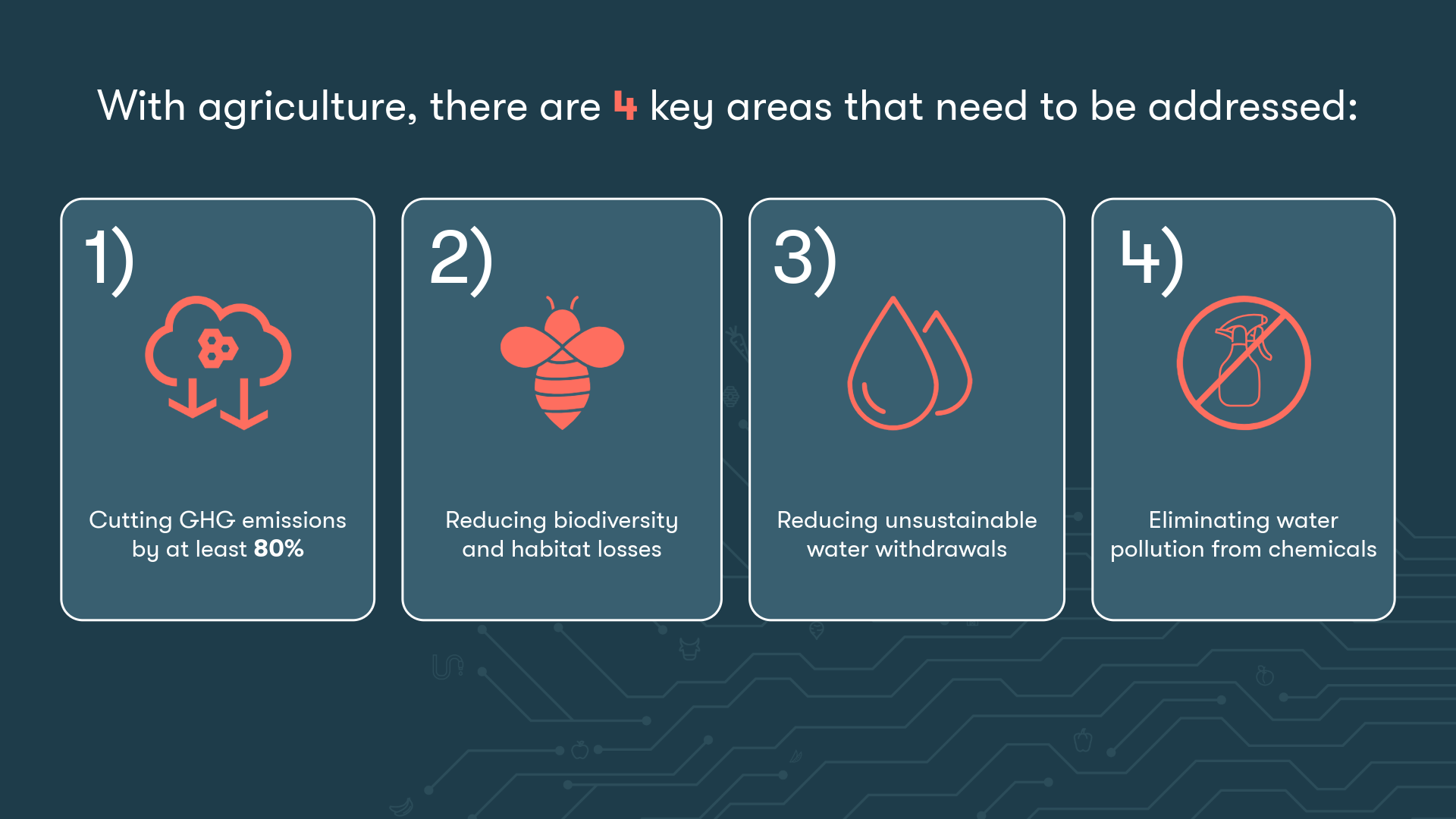Reducing Global Food System Emissions to Combat Climate Change

The challenge of agricultural food production
Globally, agricultural land covers a vast 40% of the world’s land surface–comparable in scale to the entire continent of Asia. While this expansive agricultural system sustains billions of people, its benefits also come at a big environmental cost. Notably, it is a major contributor to global greenhouse gas (GHG) emissions, accounts for 80% of deforestation, and consumes 70% of freshwater resources. Traditional agricultural paradigms have primarily focused on increasing production to ensure worldwide access to food. However, achieving food security extends beyond just production. It requires advancements in food distribution, accessibility and affordability.
As the global population steadily increases, projected to surpass 10 billion by 2050, so too will the challenge of achieving food security. This demographic surge will intensify the strain on finite resources such as land and water, and will be made worse by the influence of a changing climate on agricultural production. Climate change is forecasted to decrease agricultural productivity, with staple crops potentially experiencing yield declines of 3.1 to 7.4% per degree celsius of warming. Our changing climate and growing population, alongside other drivers such as conflicts and pandemics, prompt a comprehensive transformation of our food system.
This will be no easy feat, as the call to transform our food system is underscored by the complexity and interconnectedness of agricultural production, transportation, processing, retail, and ultimately, food waste.

Global food systems emissions, including supply chain contributions
The Paris Agreement limits the global temperature increase to 1.5°C above pre-industrial levels. To reach this target, a reduction of GHG emissions by 50% relative to current levels by 2030 and 100% of current levels by 2050 is imperative across the energy, industry, transport, buildings, agriculture and forestry sectors. Even if emissions from the other sectors were to be cut now, current trends in our global food systems would still prevent us from achieving our 1.5C target.
Between 1990 and 2015, global food production increased by 40%, contributing 34% of total global GHG emissions (18 GtCO2 per annum) in 2015. A study recently published in Nature showed that the most significant contribution came from agriculture and land use change activities (71%). Of this, the production stage of the food life-cycle accounted for a total of 39% (71 Gt CO₂e yr ⁻¹) total emissions and carbon losses from deforestation and degradation of organic soils alone accounted for 32% of total food-system emissions (5.7 Gt CO₂e yr ⁻¹).
The remaining food system emissions came from other downstream and upstream supply chain activities (i.e. transport, packaging and retail, processing, consumption, and end-of-life disposal), accounting for 29% (5.2 Gt CO₂e yr ⁻¹) of total food system emissions. Notably, “food miles” contributed less to food emissions than packaging and the majority of emissions from transporting food came from local or regional transport by road and rail, rather than international transport.
In essence, the way we produce, distribute, and consume food needs to be part of the solution, not a key contributor to the problem. And collective action is required to solve this.
Food system emissions taking centre stage
Recognising and prioritising food system emissions in global discussions is key to mobilising collective action, and there is no bigger stage than the UN climate summit.
However, until recently, food systems had been mostly absent from UN climate summit discussions. At COP26 in October 2021, the agricultural-commodities sector committed to stop deforestation and biodiversity loss due to agriculture, in line with a 1.5°C climate future. At COP27 in Egypt, they unveiled a roadmap to implement this agreement, but it fell short of the necessary actions. Significant parts of important landscapes, including the majority of the Brazilian rainforests, were left out of the roadmap. By COP28 in December 2023, food systems emissions finally took centre stage. Over 159 world leaders, representing more than half of the world’s farmers and 83% of global food system emissions, pledged to increase their climate change adaptation and mitigation efforts, culminating in the production of another roadmap for achieving sustainable food systems.
In tandem with these international commitments, substantial financial support from governments and philanthropic organisations is being directed towards projects aimed at reducing food system emissions, such as emissions from livestock and food loss and waste. The US government, for example, is increasing investment in emission reduction initiatives, aiming to remove 1 billion tonnes of CO₂ (1 GtCO₂) per year by the mid-century to reach net zero. All these efforts demonstrate a significant commitment to addressing the challenge of food system emissions within the broader context of climate change mitigation.
The way forward – searching for practical solutions
Given projections that global food production will rise by 15% resulting in an 80% increase in food system emissions from 2010 to 2050, extensive changes to the global food system are required to meet the 1.5C and 2C climate target.
Strategies that have high GHG benefits and aid in our ability to meet global food demands must be adopted. Such strategies include adopting a plant-rich diet, adjusting global per capita caloric consumption to healthy levels, improving crop genetics and agronomic practices to improve yields, reducing food loss and waste by 50% and altering management practices to reduce the GHG intensity of foods.
Agricultural production, in particular, could mitigate climate change by reducing emissions, sequestering carbon, and enhancing resilience to its impacts. Implementing low-emission agricultural interventions could lead to a 40-70% reduction in GHG emission compared to current averages. Additionally, scientists estimate that we will need to remove up to 10 GtCO₂ annually by 2050 and 20 GtCO₂ per year by 2100, and agriculture is just one avenue through which this could be achieved.
In this article...

Emanga Alobwede
Enabling farmers to communicate, improve and monetise their environmental performance


